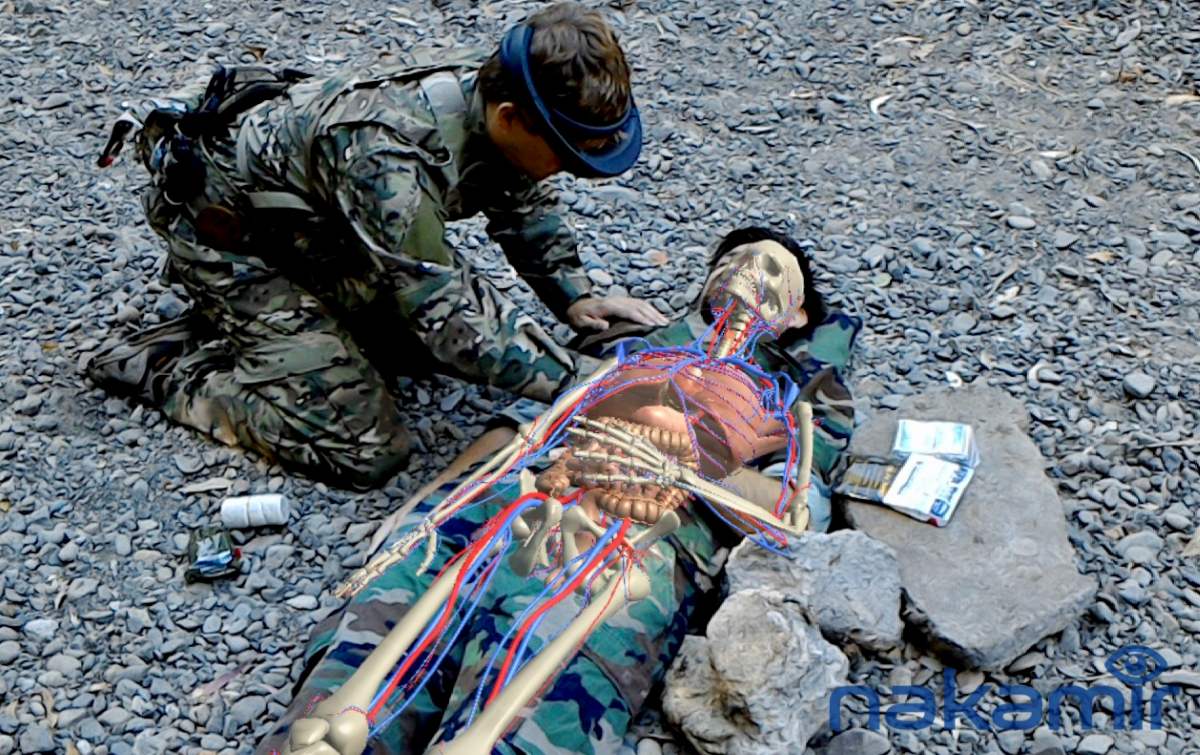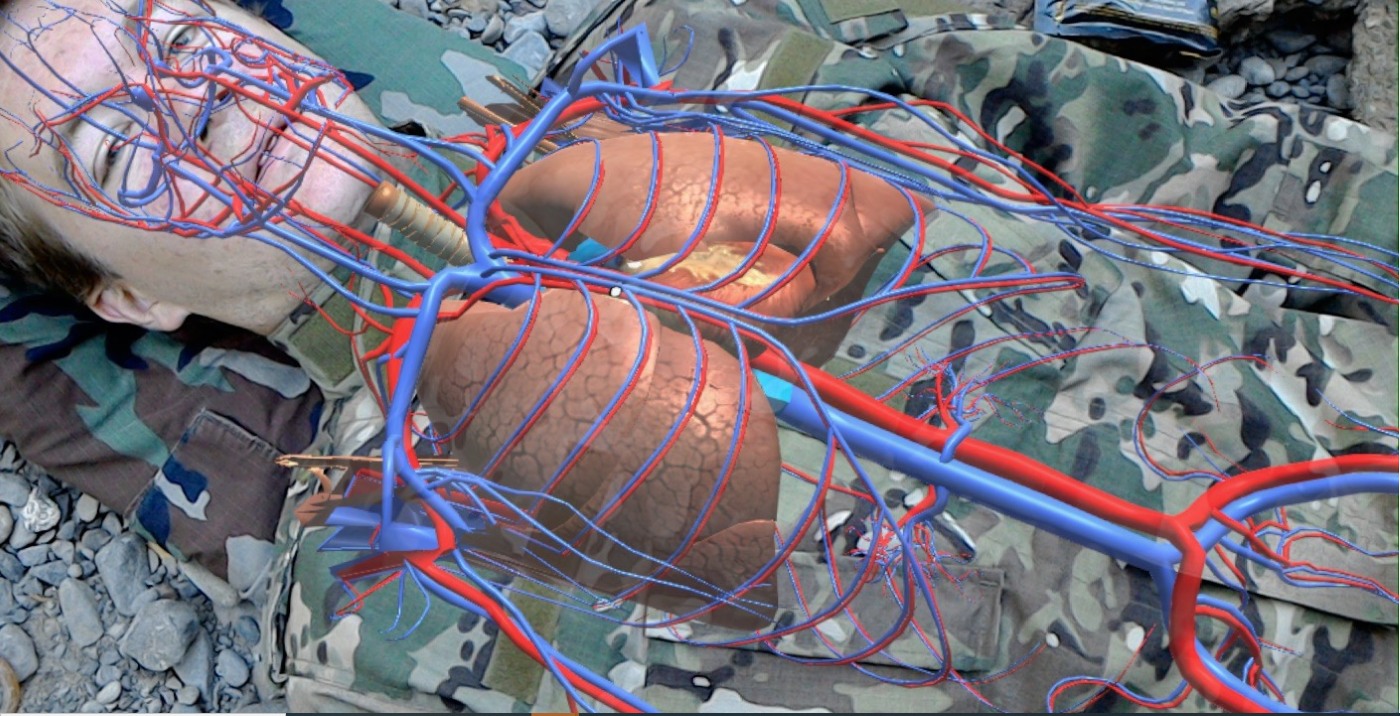
TEST SUBJECT
In a simulation, Navy Lt. Anh Nguyen, a master’s student who is currently evaluating the use of the IVAS augmented reality software, initiates treatment of a wounded warfighter by displaying virtual hands that provide previously recorded guidance in the procedure. (Photo courtesy of Christoph Leuze, Nakamir Inc.)
A new augmented reality tool will soon provide enhanced decision-making and training for medics and corpsmen.
by Gary P. Zientara, Ph.D., and Adam W. Potter, Ph.D.
A 21st century augmented reality visualization tool developed by the U.S. Army Research Institute of Environmental Medicine (USARIEM) will soon give medics and corpsman the ability to “see” 3D anatomy graphics and triage information as they are treating wounded warfighters in the field.
The potential benefits? The ability to assess and treat battlefield casualties more quickly and more effectively with fewer medical personnel, in addition to providing medical units with a 21st century training tool for enhanced training and increased readiness.
Initiated by the Defense Health Agency Small Business Innovation Research program in 2019, the USARIEM then designed augmented reality software for the Army’s Integrated Visual Augmentation System (IVAS) as a wearable tool designed to provide enhanced training through high-tech visual capabilities for Army combat medics and Navy hospital corpsman. While wearing the IVAS goggles equipped with the USARIEM software, a medic or corpsman can visualize the internal anatomy of a wounded warfighter by projecting a morphed version of preprogrammed anatomy onto the real-world view of the warfighter.
The tool has already been demonstrated at several Army, National Guard and Navy sites, but is currently being evaluated for transition to the U.S. Marine Corps to help wounded warfighters.
BENEATH THE SURFACE
When the IVAS goggles are activated, the user can see the simulated internal anatomy of the whole warfighter and use brief verbal commands to select the anatomical systems that they wish to have displayed in their field of view overlayed on the view of the warfighter.
For example, if a warfighter sustains a leg injury, the medic or corpsman wearing the goggles can focus on the femur, tibia, fibula or any other bones or tissue affected in their visual scene to assist in decision-making, increasing the efficiency of treatment. Another key aspect of this software is that a user can pull advisory text from the Tactical Combat Casualty Care Quick Reference Guide and then list procedural information on the side of the field of view. This has the dual utility of providing more lengthy guidance during training and providing terse critical information that can be called up in combat as an instant refresh to the medic or corpsman.

IN FULL VIEW
In a simulation, a medic initiates treatment of a wounded warfighter with IVAS augmented reality software, overlaying the skeleton and cardiovascular system on the display view of the warfighter. (Photo courtesy of Christoph Leuze, Nakamir, Inc.)
Recently, one of USARIEM’s industry collaborators produced graphical guidance in the form of a virtual “expert” that appears in the user’s IVAS field of view. The expert’s hands are recorded by the user or a senior medical professional in a previous rehearsal session. Visible on IVAS, the hands can facilitate an expert training of the medic or corpsman and provide guidance for battlefield procedures that require prolonged field care.

LIKE HAVING X-RAY VISION
A simulation shows the medic’s IVAS view of a battlefield casualty using the new augmented reality tool’s anatomy display capability. (Photo courtesy of Christoph Leuze, Nakamir Inc.)
TECHNOLOGY FOR THE FUTURE OF TRAINING
Navy Lt. Anh Nguyen, a student in the Cyber Systems and Operations Department at the Naval Postgraduate School, is studying the virtual expert software as part of his master’s thesis, titled “An Evaluation of Perceptually Enabled Task Guidance to Enhance Training and Operational Effectiveness for the U.S. Marine Corps.” Nguyen’s ongoing study is quantifying the effectiveness of usage by providing just-in-time perceptual cues through visual and auditory feedback. In addition, he is recording his perceptions during use to explore the psychological and physical side effects of prolonged augmented reality system use.
Marine corpsmen, like Army medics, typically operate in unique and diverse environments based on mission requirements. Often serving alongside Marine infantry, corpsmen must complete specialized field medical training, in addition to basic medical training. Corpsmen can be relatively young, from 19 years old to their early 20s, as most enlist right out of high school. They receive their basic medical training at the Medical Education and Training Campus in San Antonio, Texas, where they learn their foundational medical knowledge, terminology, anatomy, physiology and lifesaving skills.
Corpsmen receive their specialized field medical training at the Field Medical Training Battalion (FMTB) at one of two locations—FMTB West at Camp Pendleton, California, or FMTB East at Camp Lejeune, North Carolina. This training qualifies them to become Fleet Marine Force hospital corpsmen. The FMTB schoolhouse teaches corpsmen specialized skills for operating within Marine units, providing combat medicine and tactical combat casualty care training. As corpsmen are often embedded with Marine units, their roles require them to be highly adaptable to meet both the physical and clinical demands of a combat environment.
Corpsmen, like medics, face complex environmental stressors—such as treating wounded warfighters while under fire. Cutting-edge technologies like the IVAS can augment their experience and provide additional aids for timely decision-making, including the virtual expert guidance, which can serve as a valuable source of supplemental training or a refresher. The IVAS does not require network or cloud communications and can function in all domestic and international environments. These technologies are designed to enhance knowledge and skill, but they are also created to not overwhelm or add to the stress of the user.
CONCLUSION
The main advantage of augmented reality software and goggles or glasses is the ability to put graphical and textual information directly into the field of view of the user at the moment it’s needed. This approach is a powerful source of information not satisfied by old technology, hard copy manuals, training videos or other traditional training aids. The corpsmen and medic tool is designed to be an application of state-of-the-art technology to provide combat support for medical readiness and to support timely return-to-duty. It is a prime example of bringing information on demand, at any time and in any environment to the user, with the user in control of content and delivery.
For more information, contact Gary Zientara at gary.p.zientara.civ@health.mil or 508-206-2416.
GARY P. ZIENTARA, PH.D., has been serving as a senior research scientist at the USARIEM since 2014. His research includes the human digital twin and the development of photonics-based non-contact medical devices. He previously served as a research scientist at Massachusetts Institute of Technology and as an associate professor of radiology at Harvard Medical School and Brigham and Women’s Hospital in Boston, Massachusetts. He holds a Ph.D. in physical chemistry from Cornell University and a B.S. in chemistry from Syracuse University. He did his post-doctoral research at Cornell University.
ADAM W. POTTER, PH.D., has been serving as a research physiologist at the USARIEM since 2010. Previously, he worked in inpatient medical research, managing more than a dozen drug and device clinical trials (Phase II-IV), and was active duty in the U.S. Marine Corps for six years. He holds a Ph.D. in biomedical informatics with a focus on clinical informatics and nanomedicine from Rutgers University-Newark; an MBA and an M.S. in sport and health sciences from American Military University; and a B.A. in psychology from Cambridge College. His research focuses on modeling and measuring human performance, specifically in response to environmental extremes and related to body composition and endocrinology. His scientific findings have resulted in more than 140 open literature publications and government reports.







